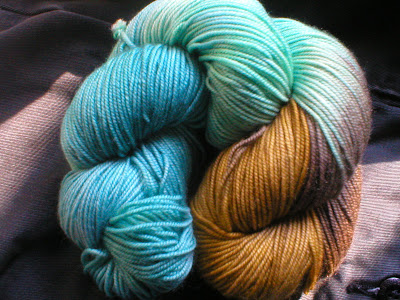Versailles Bookmark
Books make great gifts, but I like to personalize them a bit by including a handmade bookmark. Here's one I recently finished.

There are many very nice bookmark patterns already on the net, but I haven't yet found one that has lace patterning on both sides, so I thought I'd put this up here. It's a quick and easy way to introduce yourself to this type of knitting.
I apologize for the crappy pictures. I had to use the flash to get something without shadows, and the colour red continues to confound my cheap little Radio Shack camera.
 This bookmark is knit length-ways and is self-fringing. The pattern kind of looks like leaves and kind of looks like rectangles, depending on your mood, I guess.
This bookmark is knit length-ways and is self-fringing. The pattern kind of looks like leaves and kind of looks like rectangles, depending on your mood, I guess.

(Edit December 28, 2011: Blogger has apparently decided that all my nicely numbered rows should actually appear as bullet points instead. Blech. There's a properly formatted copy of this pattern available for free on Ravelry. I would recommend you download that instead.)
Versailles Bookmark (Versailles Pattern is from Barbara Walker's Second Treasury.)
Materials: I used Opera No. 20 Crochet Cotton and 1.75 mm needles. You can use whatever you want as long as the solid parts look kinda solid and the holes look kinda holey.
Using a provisional cast-on (this one works wonderfully!), cast on 68 stitches.
Set up row: K 7, place marker, K 54, place marker, K 7.
- (RS) K 4, P 1 TBL, K 2, knit across to second marker, K 2, P 1 TBL, K 4.
- (WS) K 4, K1 TBL, K2, knit across to second marker, K2, K1 TBL, K4.
The outermost seven stitches on each end are border stitches and the portion between the markers will be knit in pattern. The format is four garter stitches, 1 reverse stockingnette twisted on every row, two garter stitches, marker, pattern, marker, 2 garter stitches, 1 reverse stockingette twisted on every row, four garter stitches. The reverse twisted stockinette stitches are important -- don't forget them.
The lace pattern is irregular. Don't bother trying to put markers between the repeats, because it won't work. When you reach the second marker, sometimes you'll be able to do a full repeat, but sometimes you'll have extra stitches left over or not enough for a full repeat. Just end before the second marker with the stitches indicated after the word "end".
There are a lot of P2tog-TBLs in here. I hate those. Instead, I used "Purl 1 and slip it back to the left needle, lift the second stitch on the left needle over the stitch just purled and off the needle, slip the stitch back to the right needle." If you wish, you can do that too, and I won't tell anyone.
Keeping the border in pattern, knit the lace between the markers.
- (WS) Purl.
- K2 * YO, SSK, K8 * end K2
- K2 *YO, P2tog, P5, P2tog-TBL, YO, P1 * end K2
- K4 * YO, SSK, K3, K2tog, YO, K3 *
- K2, P2 * YO, P2tog, P1, P2tog-TBL, YO, P5 * end P3, K2
- K6 * YO, Sl1-K2tog-PSSO, YO, K7 * end K5
- K2 * P3, P2tog-TBL, YO * end K2
- K3 * YO, SSK, K3 * end K1
- K2, P1 * P2tog-TBL, YO, P3 * end P2, K2
- K5 * YO, SSK, K3 * end K2
- K1 * P2tog-TBL, YO, P3 * end P1, K2
- K2 * YO, SSK, K3 * end K2
- Same as Row 3
- Same as Row 4
- Same as Row 5
- Same as Row 6
- K2, P1 * P3, YO, P2tog * end K1
- K5 * K2tog, YO, K3 * end K2
- K2, P1 *YO, P2tog, P3 * end P2, K2
- K3 * K2tog, YO, K3 * end K1
- K2 * P3, YO, P2tog * end K2
- K1 * K2tog, YO, K3 * end K3
- Same as Row 3
- Same as Row 4
- Same as Row 5
- Same as Row 6
- Purl.
Binding off, RS facing: K 4, P1-TBL, K1, * replace the last two stitches onto the left needle and knit them together through back loop, K1 * repeat until you reach the second reverse twisted stockingnette, P1-TBL, replace the last two stitches onto the left needle and knit them together through back loop. Cut the yarn, leaving a tail long enough to weave in. You are left with four stitches on the right needle and four on the left. Pull the needles out and just let those stitches hang there for the moment. Take the tail that you just cut and weave it in on the wrong side through the column of twisted stockinette. Pick up the stitches from the provisional cast-on and bind off in a similar fashion. (Depending on which cast-on you used and how you picked the stitches up, you could be on either the wrong side or the right side. Just be sure to twist the stitches that need twisting and not binding off the four outermost garter stitches on each end.)
Finishing: Unravel the four garter stitches on each end up to the twisted stitch. The twisted stitch will not unravel. Snip the far end of the loops so that each loop becomes two strands of fringe. Wet block, stretching it out so the pattern shows well and the ends and sides are straight. Smooth out the kinks in the fringe so it is straight. When dry, unpin and trim the fringe ends evenly.
That's it. If you knit this, I'd love to see a picture.






















